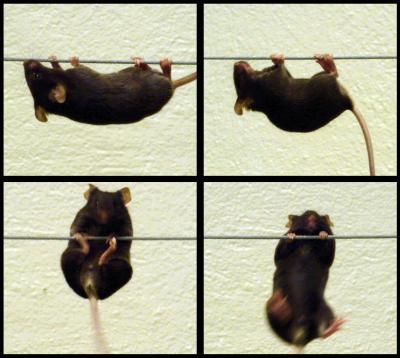Philadelphia, PA, January 15, 2013 – A new study has found that tamoxifen, a well-known breast cancer drug, can counteract some pathologic features in a mouse model of Duchenne muscular dystrophy (DMD). At present, no treatment is known to produce long-term improvement of the symptoms in boys with DMD, a debilitating muscular disorder that is characterized by progressive muscle wasting, respiratory and cardiac impairments, paralysis, and premature death. This study will be published in the February 2013 issue of The American Journal of Pathology.
Using the mdx5Cv mouse model of DMD, investigators found that tamoxifen, given orally for more than a year, "caused remarkable improvements of muscle force and of diaphragm and cardiac structure," according to lead author Olivier M. Dorchies, PhD, of the Department of Pharmacology, Geneva-Lausanne School of Pharmaceutical Sciences of the University of Geneva and University of Lausanne. For instance, in the heart, fibrosis was diminished by approximately 50%. In the diaphragm, the muscle of the dystrophic mouse thought to be most like that of human DMD, tamoxifen reduced fibrosis while increasing thickness as well as the number and average diameter of muscle fibers. The net effect was that tamoxifen raised the amount of contractile tissue available for respiration by 72%.
Patients with DMD show muscle degeneration, and their muscle fibers become abnormally susceptible to stress. In this animal study, tamoxifen improved the structure of leg muscles, slowed muscle contraction, increased overall muscle function, and made leg muscles more resistant to repetitive stimulation and fatigue. In fact, tamoxifen rendered dystrophic muscles even stronger than those of non-dystrophic control mice. "Our findings of a slower rate of contraction and an enhanced resistance to fatigue in muscles from tamoxifen-treated dystrophic mice are of significance for the pathophysiology of muscular dystrophy," say the authors.

The mice were allowed to grasp a metal wire maintained horizontally above a thick layer of soft bedding (upper left). After exploring the wire for a short period of time (upper right), the mice tried to pull themselves on the wire (bottom left), a very energy-demanding exercise, until they lost grip of their hind paws and hung onto the wire with their forelimbs only (bottom right). From this position, the untreated mdx5Cv mice were unable to sustain their own body weight for more than a few seconds before falling, whereas the mdx5Cv mice treated with tamoxifen (not shown) performed much better and as well as normal mice.
(Photo Credit: Dorchies et al.)
A wire test revealed that treating male mdx5Cv mice with tamoxifen for more than a year increased the whole body strength 2- to 3-fold, close to that of normal mice.
Additional findings shed light on the mechanism of tamoxifen's therapeutic actions. For example, plasma creatine kinase (CK) activity was found to be about 3 times higher in the dystrophic male mice than in the non-dystrophic males, and tamoxifen treatment normalized the CK levels of the dystrophic mice. The authors suggest that this effect is mediated by an estrogen receptor (ER) dependent mechanism. The study also reported for the first time that mouse dystrophic muscle is high in both ER α and β, and that tamoxifen raises levels of ERβ2 in particular. Other findings, such as increased levels of calcineurin and accumulation of several structural proteins, indicate a protective effect of tamoxifen on dystrophic muscles. The authors point out that the beneficial effects of tamoxifen were seen with muscle tissue levels much lower than those reported in previous studies of normal rodents, suggesting that doses lower than those used to treat breast cancer may be effective in the treatment of DMD.
Source: Elsevier Health Sciences